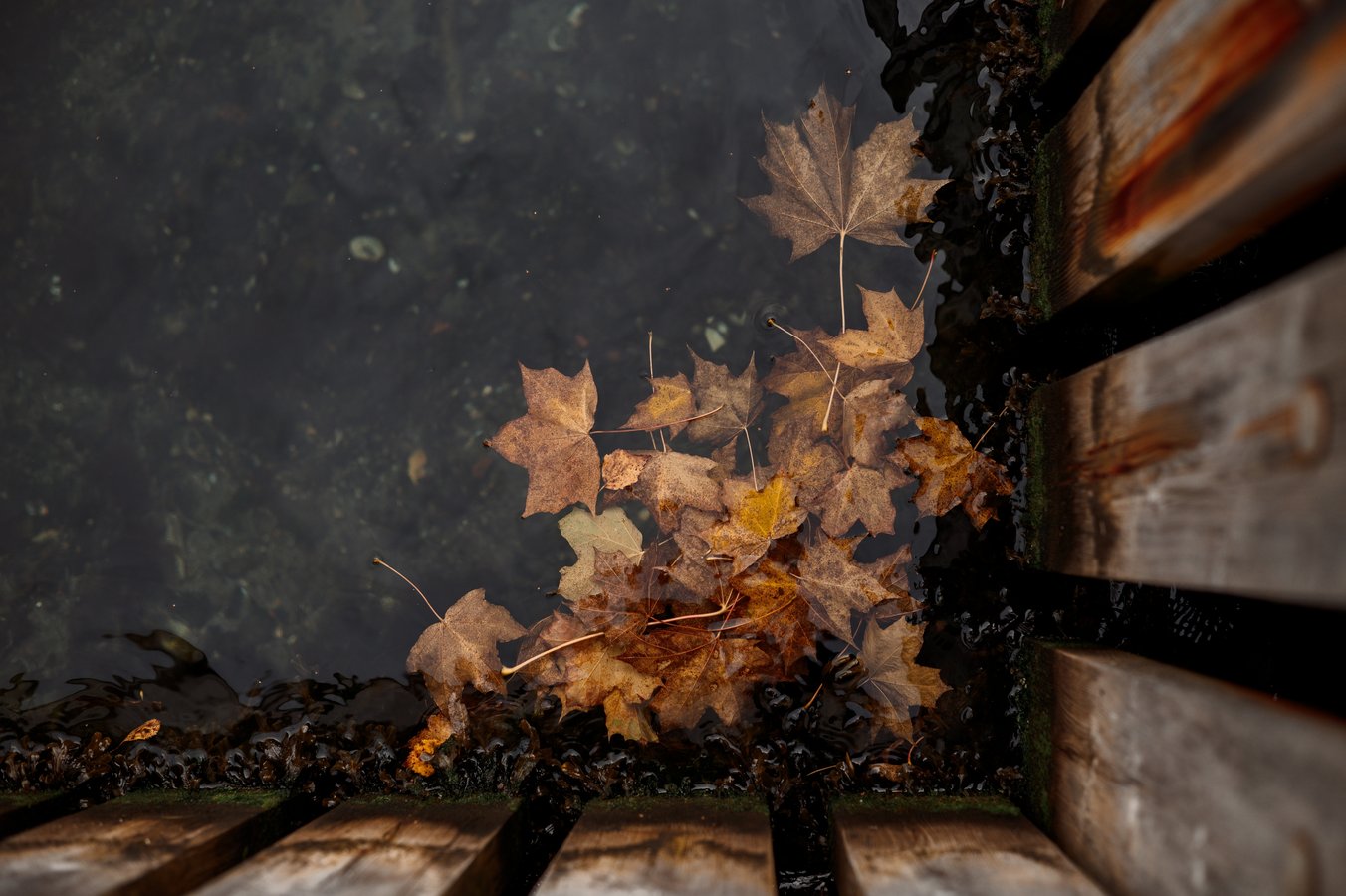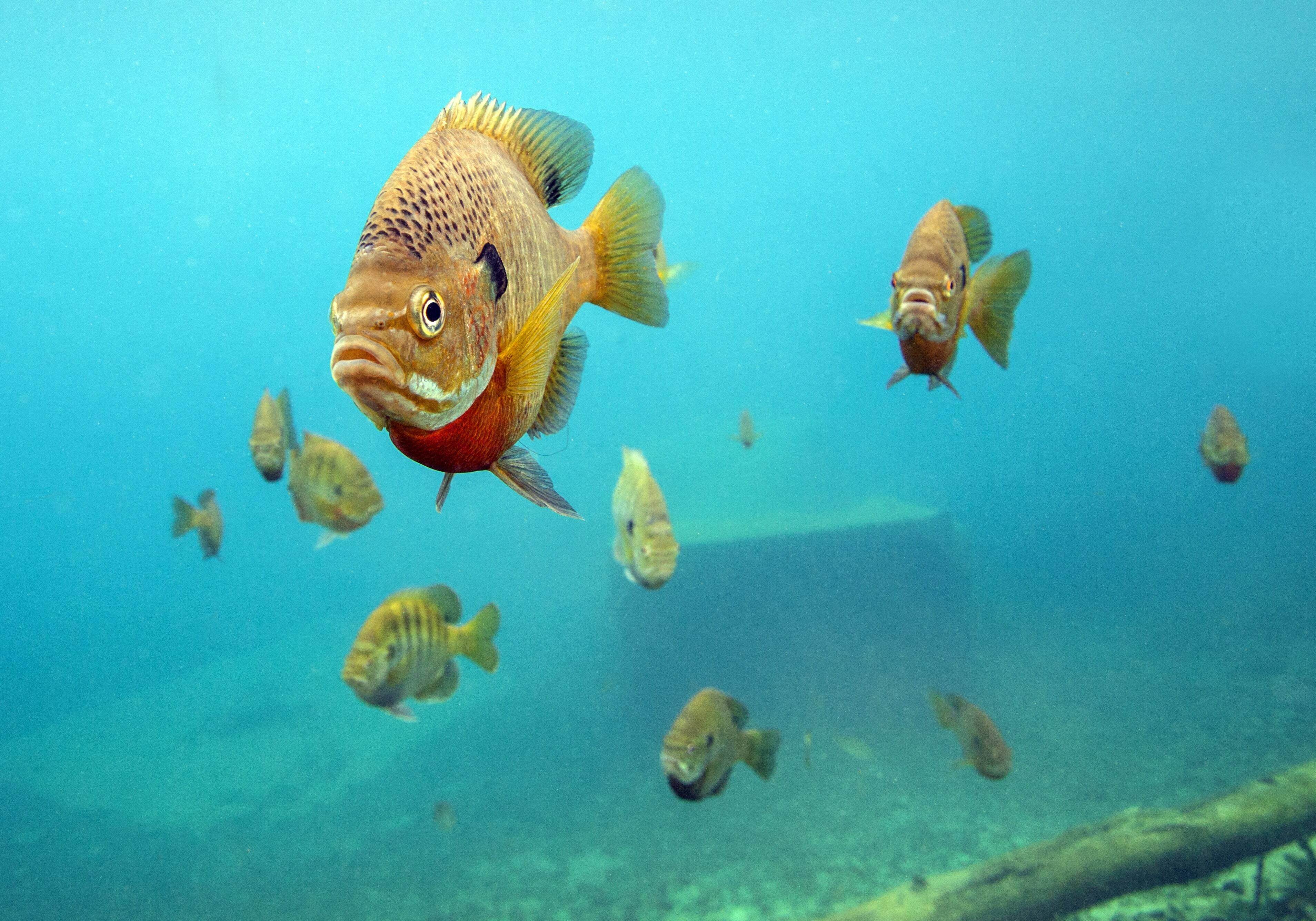Fall Leaf Litter & Nutrient Loading: Protecting Wisconsin Lakes and Ponds

Autumn in Wisconsin brings breathtaking colors along lakefronts and ponds—but when leaves hit the water, they can create lasting problems. Decaying leaf litter is one of the biggest contributors to nutrient loading, which drives algae blooms, excess muck, and long-term water quality decline.
Without action, the leaves falling this season may fuel next spring’s algae outbreak. By managing nutrient loading in the fall, you can help keep your Wisconsin waterbody clear, healthy, and balanced year-round.
What Is Nutrient Loading?
Nutrient loading occurs when excess phosphorus and nitrogen build up in a lake or pond. These nutrients typically enter the water from fertilizer runoff, eroded soil, stormwater inflows, and decaying organic matter like leaves.
While nutrients are part of natural ecosystems, high concentrations overwhelm the balance—causing algae growth, oxygen depletion, murky water, and fish stress.
How Leaf Litter Affects Wisconsin Waterbodies
Even though fallen leaves may seem harmless, they release nutrients and create conditions that feed algae and harm aquatic life:
- Nutrient Release – Decomposing leaves add phosphorus and nitrogen that can fuel algae blooms and aquatic weeds.
- Sediment and Muck Buildup – Leaves settle at the bottom, forming nutrient-rich muck that contributes to long-term water quality decline.
- Lower Oxygen Levels – Decomposition consumes oxygen, leaving fish and beneficial organisms at risk.
With Wisconsin’s many wooded shorelines, even one fall season of unmanaged leaf litter can overwhelm smaller ponds and shallow lakes.
Why Fall Management Is Critical
Unlike summer algae blooms, which are easy to spot, nutrient loading in the fall is a silent threat. By the time spring arrives, the nutrients are already in the water, ready to spark algae growth.
Taking steps in autumn helps:
- Prevent nutrient buildup before it starts.
- Reduce spring and summer algae problems.
- Slow sediment accumulation that shortens pond lifespan.
- Protect fish populations and aquatic habitats.
4 Practical Steps to Prevent Leaf-Driven Nutrient Loading
Whether you manage a backyard swimming pond, a fishing lake, or a community waterbody, these fall strategies can make a lasting impact:
- Strengthen Shoreline Buffers
Planting native vegetation along the shoreline helps trap leaves and filter runoff before it reaches the water. - Use Nutrient-Binding Treatments
In waterbodies prone to algae, treatments such as alum (aluminum sulfate) or lanthanum can bind phosphorus released by decaying material and keep it unavailable to algae in spring. - Remove Floating Debris
Tools like pond skimmers and rakes work well for small ponds, while larger waterbodies may benefit from professional removal equipment. - Maintain Aeration and Circulation
Aeration systems keep oxygen levels stable, promote healthy breakdown of organic matter, and reduce conditions that release stored nutrients. - Apply Beneficial Bacteria and Enzymes
Introducing natural bacteria and enzyme products in the fall can accelerate the breakdown of leaves and organic debris. In the presence of aeration, these microbes work even more efficiently, minimizing nutrient release and slowing muck accumulation.


The Long-Term Benefits
Fall leaf management goes beyond preventing algae in the next season. It also:
- Keeps water clearer for recreation and aesthetics.
- Supports stronger fish populations and aquatic life.
- Reduces reliance on chemical treatments and dredging.
- Extends the overall lifespan of ponds and lakes.
Partnering with Wisconsin Lake & Pond Resource
At Wisconsin Lake & Pond Resource, we understand the unique challenges Wisconsin waterbodies face throughout the seasons. From nutrient management and aeration to shoreline restoration and debris removal, our team provides customized solutions to keep your pond or lake thriving.
Whether you care for a private fishing pond, an HOA lake, or a public waterbody, we can help you build a management plan that protects your investment and enhances water quality for years to come.
Final Thoughts
The colorful leaves of autumn may look stunning on shore, but once they enter the water, they set the stage for algae, muck, and long-term damage. Acting now ensures your Wisconsin pond or lake stays healthy, clear, and enjoyable for the future.
By combining simple practices like debris removal and shoreline buffers with proactive tools such as aeration and beneficial bacteria applications, you create the best conditions for lasting water quality. Together, these strategies reduce nutrient buildup, strengthen fish habitats, and extend the life of your pond or lake.
Want a proactive fall management plan? Contact Wisconsin Lake & Pond Resource today to schedule a consultation.
About Wisconsin Lake & Pond Resource, A Jones Lake Management Partner
Wisconsin Lake & Pond Resource specializes in comprehensive lake and pond management solutions, including algae and aquatic weed control, aeration, hydraulic dredging, erosion control, and fisheries management. As a Jones Lake Management Partner, we serve a diverse range of clients, including HOAs, golf courses, municipalities, and private lake owners. With a commitment to science-driven strategies and environmental sustainability, Wisconsin Lake & Pond Resource helps maintain and restore aquatic ecosystems for long-term health and enjoyment.
Topics
- Aeration (3)
- Algae (2)
- Aquatic Weeds & Algae Control (13)
- Bathymetry Mapping (2)
- Company News & Updates (33)
- Erosion Control & Sediment Reduction (4)
- Fish Management (1)
- fish stocking (6)
- Fisheries Management (21)
- Fishery (2)
- Fountains & Aeration (16)
- Hydraulic Dredging (6)
- Invasive Species Management (7)
- Lake & Pond Management (47)
- Lake Management (1)
- Native Wetland Plantings (1)
- Nutrient Management (9)
- Pond Management (1)
- Seasonal Pond Management (15)
- Sediment Sampling (1)
- Stormwater & Runoff Management (5)
- Sustainability & Eco-Friendly Solutions (4)
- Water Quality (3)
- Water Quality Monitoring (2)
- Winter Care (1)
- Winter Pond care (1)
